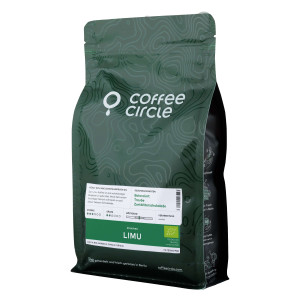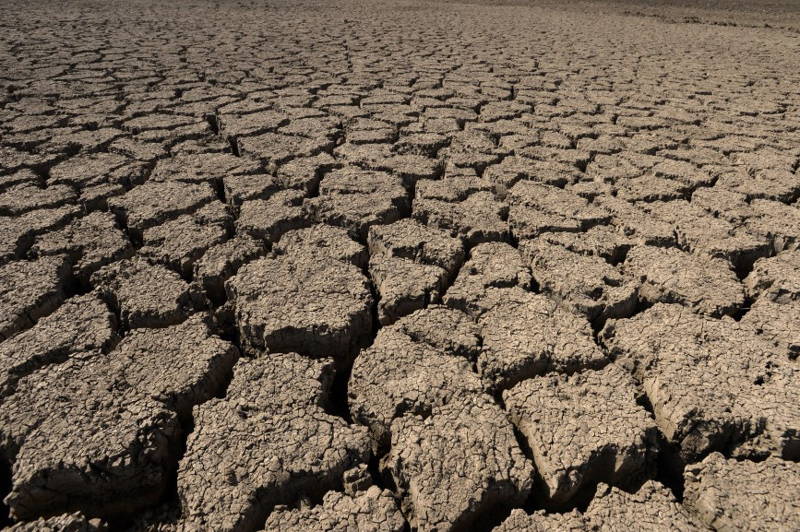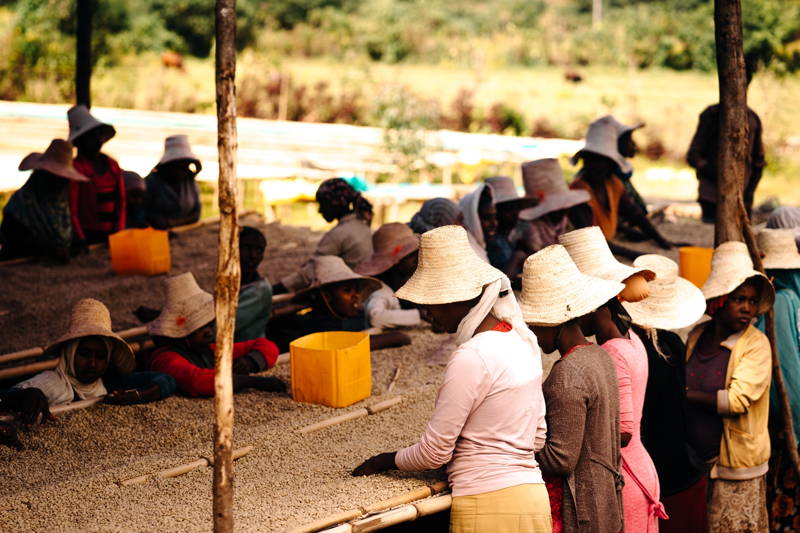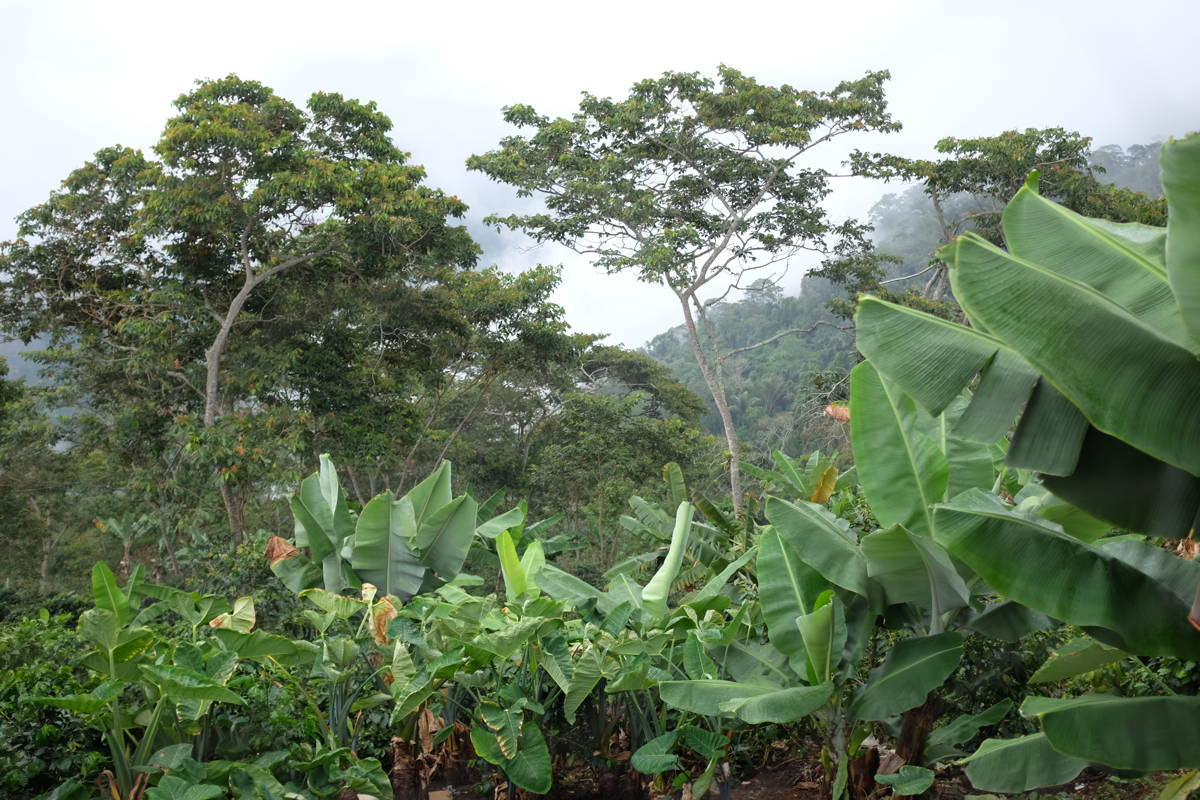
Climate Change: Is Coffee Under Threat?
Climate change affects every aspect of our lives, including the cultivation, harvesting and selling of coffee. Do we have to fear that coffee will become a rare commodity, that beans will lose some of their quality due to changing weather conditions, and that farmers will have to fight even harder for their livelihoods? We looked for answers to these questions.
On August 9th 2021, the Intergovernmental Panel on Climate Change (IPCC) published an assessment that spread – forgive the pun – like wildfire: Human beings and their actions are the main reason for climate change which will lead to even more extreme weather events and threaten life on earth as we know it. For years, the American intellectual Noam Chomsky has warned that climate change is the biggest threat to human existence, even more so than an atomic war is. If we look at some of the extreme weather events we have seen in recent years, it is difficult to disagree: wildfires in Sweden, floods in the German Ahrtal, frost in Brazil. The amount of climate refugees – from Bangladesh, for example – is increasing steadily since fewer and fewer parts of their home countries are inhabitable due to increasing sea levels. Wildfires in California are raging non-stop. They have become part of the landscape. The Intergovernmental Panel on Climate Change warns: We need to reduce greenhouse gas emissions immediately and drastically in order to prevent the global temperature rising to a further 1.5 °C. The clock is ticking. Time is running out.

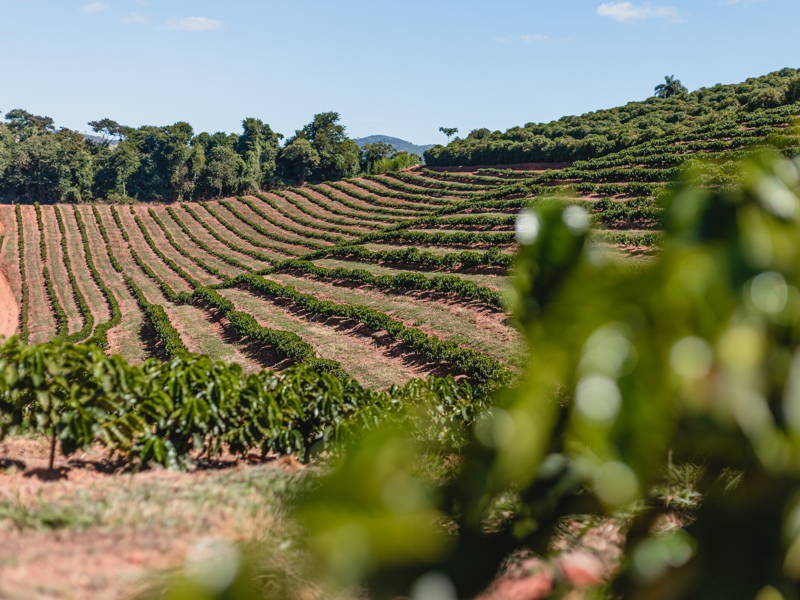
Climatic conditions are changing
At the end of September 2021, a new study was published investigating the global rise of coffee prices. They are directly related to changing climatic conditions: surprisingly, Brazil had to deal with frost in July which ruined large parts of the crop. Due to the small supply, prices had to be increased. According to the study, coffee will be $4.44 more expensive per kilo by the end of this year. Coffee farmers, exporters, importers and roasters are not surprised. Scientists aren’t either. Coffee is, not unlike chocolate and wine, a particularly fragile raw product which can grow only under specific conditions.
As we summarised here, the consistency of the earth, the intensity of sunlight, and the amount of rain are decisive during the ripening season. Coffee cherries need to grow in a balanced climate without extreme heat but enough rain and sufficient shadow. Arabica beans, for example, grow best with a temperature between 18 and 22 °C and in regions that are above 900 meters high. Although they can potentially grow in higher regions as well and even develop stronger flavours, they need vastly longer to mature. This data just shows how fragile coffee cherries are and therefore how threatening changing climatic conditions can be, especially since they can bring with them pests and other illnesses.
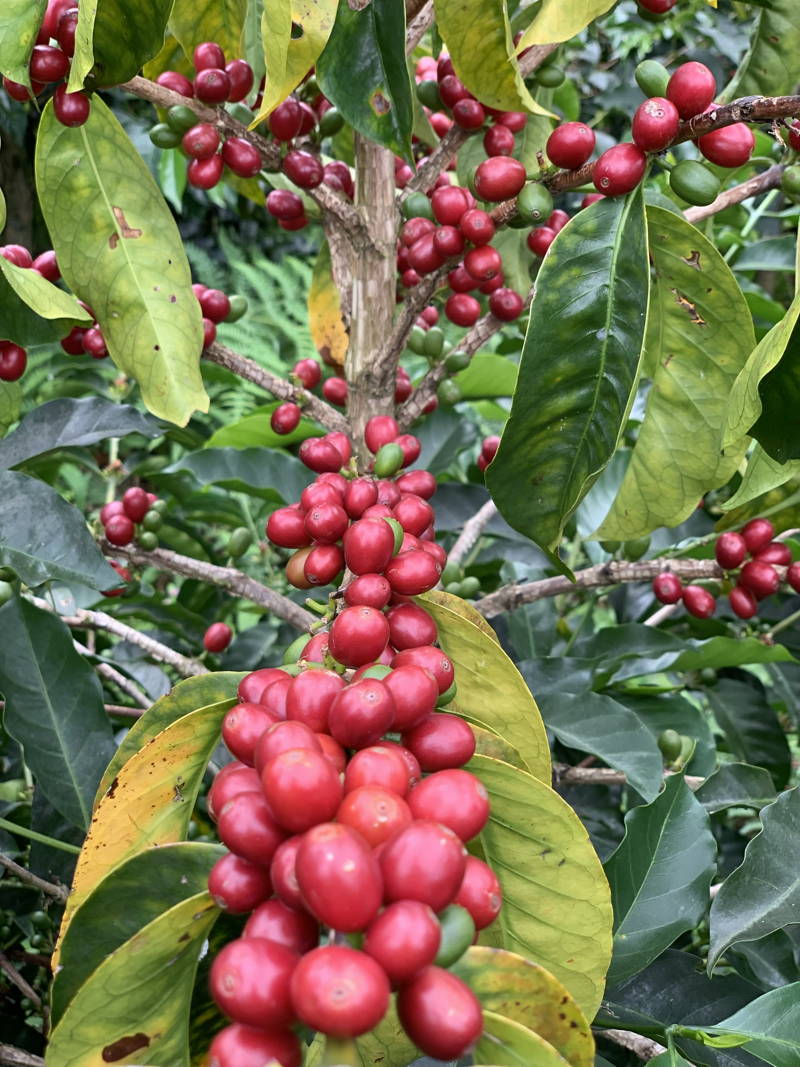
Planning has become more difficult
Warnings aren’t new that climate change is a threat not to be underestimated for Arabica. Already in 2012 a team of scientists from the United Kingdom and Ethiopia warned that global warming will harm the global production of coffee immensely. Especially Arabica – which makes up 70 % of global coffee production – is not flexible enough to withstand prolonged periods of drought or rainfall, let alone illnesses that go with changing conditions. We at Coffee Circle have noticed first-hand the effects of climate change on coffee harvesting, the export and sales. Our roaster Hannes explains:
Stephan Eicke: Hannes, are climate change and the related issues something that coffee farmers openly worry about when you speak with them?
Hannes Fendrich: Yes, definitely. It has become a standard that this year nothing is as it was before: the rainy period came too early, too late, there was too much rain or not enough. Coffee farmers also report that it was too sunny during the drying of the cherries. Others report they suffered too much rain. Let’s take Ethiopia as an example: they have – or had – a rainy season and a dry season. During the dry season, the cherries ripen, develop their sweetness. You can then dry them outside. Until now, rain during the dry season was seen as a rare exception. Now you simply can’t guarantee anything anymore. You can’t depend on strict periods anymore which in turn makes your whole planning much more difficult because you need different equipment if you want to uphold the same level of quality as before. It is also possible that the cherries dry too quickly since it is hotter than it should be in an ideal scenario. The raw coffee can then decay easily.
We do not have to emphasise how catastrophic these events are for farmers. Especially cooperatives and independent farmers who grow specialty coffee often do not have the opportunity and the financial means to settle in higher regions or buy new equipment which protects their harvest. Whole livelihoods will be lost, the economies of whole countries decimated.
You mentioned Ethiopia: What is the current situation in Brazil, a country that had to contend with frost in July?
Coffee prices have been rising sharply due to the frost in Brazil, the increasingly extreme temperatures. Last year they didn’t have much rain. Brazil can only harvest small amounts of coffee which makes the global price of coffee rise. Every roastery noticed it, us included. Even contacts which we are developing now are more expensive than previously. It is directly related to the frost in July. Until recently, the prognosis that the demand will be higher than the supply did not come true. That has changed. The decisive question is whether the demand will decrease again, increase or stay that way. Nobody knows the answer to that. For the next two to three years, the situation is unlikely to relax since coffee beans need that time to recover from the damage caused by the frost.Do you dare to look into the future?
The demand has increased particularly because of threshold countries, emerging markets. They consume more coffee than before. Will we see a deficit in the coming years? I don’t think anybody can tell what the situation will be in 20, 30 or 40 years’ time. However, I think it is safe to say that it will be challenging to meet the demand. We have also noticed that some flavour profiles have changed, especially in Ethiopian natural Arabica beans. Just a few years ago they tasted like blueberry. Now they taste more like red fruit, like strawberry and raspberry. It is not proven yet that this change is directly related to the extreme weather events or the climate. I think it is highly likely, though, since we have noticed how these flavour profiles are changing in several regions. It is only a theory.
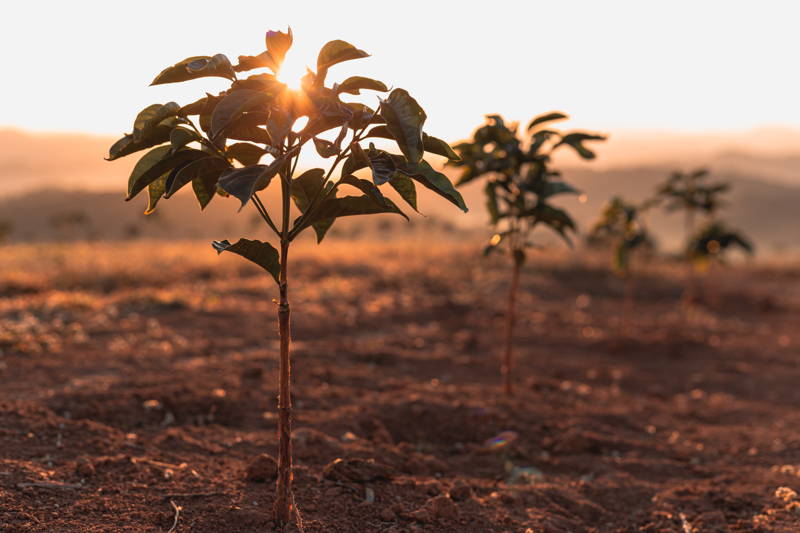
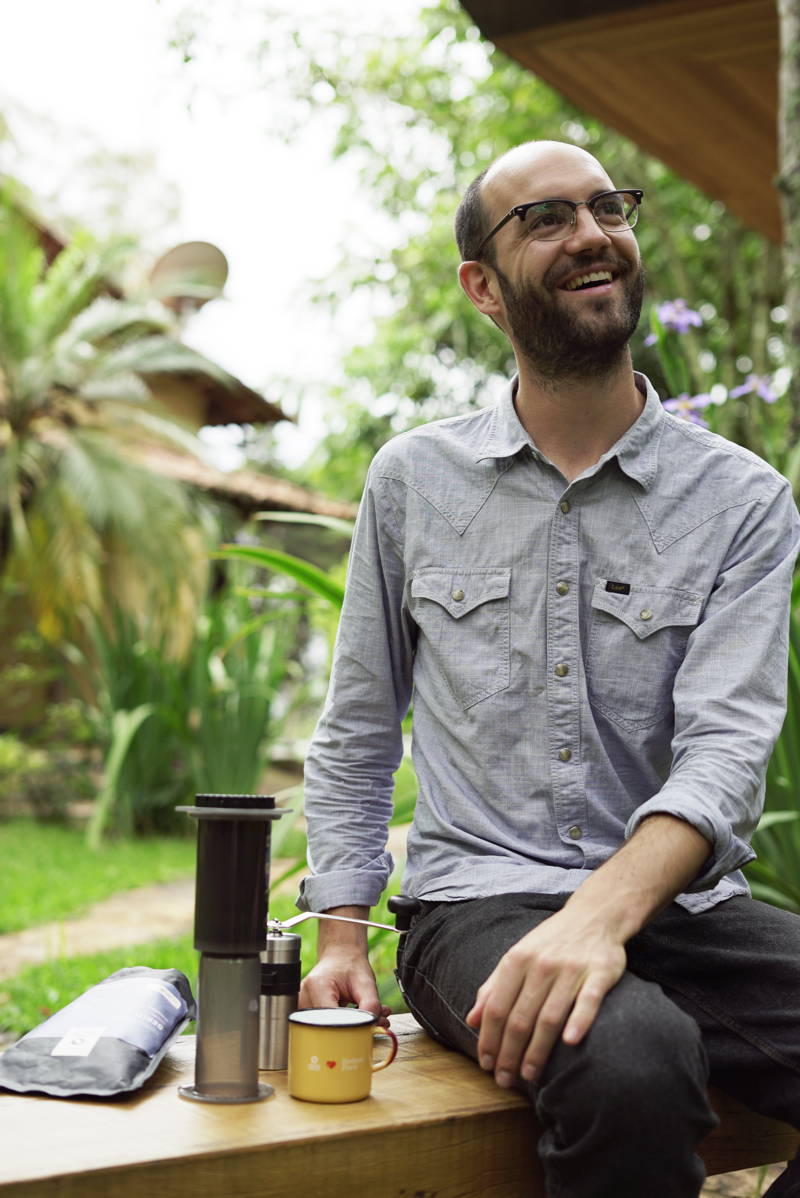
100 % Arabica
Whole regions are under threat
The unpredictability of climatic conditions and therefore changing weather patterns is difficult not only for coffee farmers in Brazil. The country is often cited as an example for the threat that climate change poses due to the frost in July. Scientists have no doubt it is directly related to global warming. Moreover, the country hasn’t had a typical rain season since 2010 according to several studies. Brazil is not an exception. Yet another recent study warns that half of the coffee growing regions could be unusable by 2050 due to the fragility of Arabica and Robusta beans.
A study dedicated to Ethiopia and conducted by the Potsdam Institute for Climate Impact Research agrees, even though it argues that farmers have a little more time left: Until the 2090s, coffee growing regions could actually increase. But head author Abel Chemura warns: “More is not necessarily better. On the flipside, the suitable area for high quality specialty coffee types which are valued for their floral, fruity and spicy notes, will likely shrink if climate change continues unchecked. This is an issue not just for coffee lovers, but for local agricultural value creation.” If it grows warmer still, the cherry will ripen more quickly than the bean can develop which will lead to a loss in quality. Some regions are more under threat than others. Scientists from the Potsdam Institute for Climate Impact are especially worried about the future of the Yirgacheffe region in Ethiopia: They fear that more than 40 % of it will no longer be usable to grow coffee by the end of the 21st century.
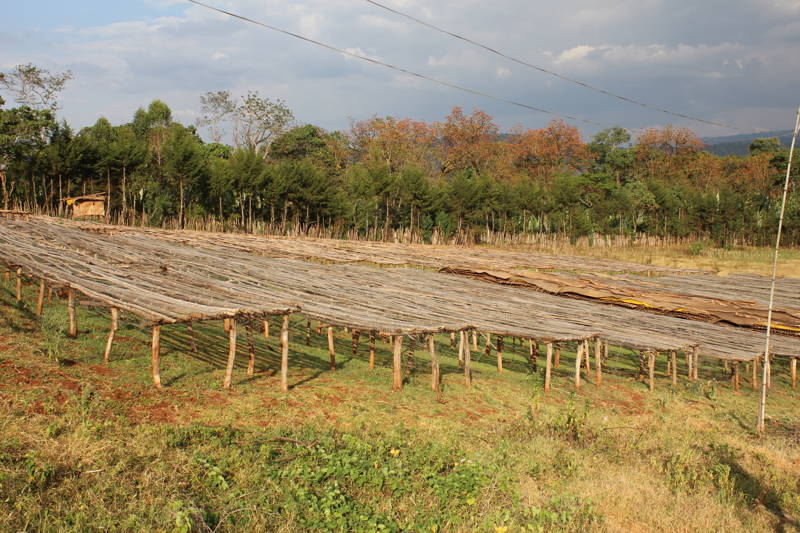

Hope rests in a “forgotten” variety
What to do? Most studies only investigated the adaptability of Arabica and Robusta beans. However, there are more than 124 coffee varieties – not just two although they essentially make up the world market. Out of these 124 varietes 75 are threatened with extinction, approximately 60 % as a study conducted by scientist Aaron Davis and colleagues found. 35 are not under threat, while for 14 varieties there was not enough data to reach a conclusion. The scientists agree with their colleagues that coffee will be harder to grow due to climate change. But Aaron Davis has high hopes in a coffee variety that was essentially forgotten: Stenophylla.
Stenophylla beans grow in West Africa and taste like Arabica. They are more resistant to heat and rain though. In an interview with the BBC, Aaron Davis summarised: “Being somebody who’s tasted a lot of wild coffees they’re not great, they don’t taste like Arabica so our expectations were pretty low. And we were completely blown away by the fact that this coffee tasted amazing. It has these other attributes related to its climate tolerance: it will grow and crop under much warmer conditions than Arabica coffee.” Until recently, Stenophylla was thought of as extinct outside the Ivory Coast. Then it was found in Sierra Leone. In a tasting session, 80 % of the coffee experts could not tell the difference between Stenophylla and Arabica.
The first Stenophylla seeds have already been planted to observe whether their full potential can be unleashed and sustained. Aaron Davis expects that Stenophylla will be available as a niche coffee product within the next five to seven years until it will replace Arabica as the leading coffee variety. Should that indeed happen, it would be an important step in the right direction to secure the coffee supply globally despite climate change. The consequences for a breakdown in the supply chain would be severe not only for us as consumers. For coffee farmers and the economies of whole countries, especially Ethiopia, they would be devastating.

Far-reaching challenges
Can that be the answer? Broadening the regions for coffee growing and creating entirely new ones would have severe, negative consequences for the environment, particularly because of deforestation. As mentioned previously, many existing cooperatives and individual farmers wouldn’t be able to afford a migration. Women are hit especially hard: 20 to 30 % of coffee farms are run by women. Women make up 70 % of the labor force on farms. Due to the lack of stability and the high risks of coffee growing, many farmers won’t receive financial credit and support. In some countries women are allowed to use land but not legally possess it as the recent Coffee Guide of the International Trade Center highlights.
Instead, many farmers depend on an increasing use of fertilisers and other chemicals. They hope that this will protect their plants at least from pests and other illnesses. Individual cooperatives or even countries are powerless, though. It needs a whole society to slow down global warming. The International Trade Center suggests a call to action in three steps:
- Cut emissions to zero
- Raise the natural carbon cycle
- Create equality for everybody
The last point sounds easier said than done. But everybody can do their part. For example, make sure that you buy your coffee from sources that pay farmers appropriately – more than they are on average. That way, farmers are enabled to purchase new equipment which in turn can minimise the energy-intensive production of coffee. You are not powerless. And together we can still move a lot.


